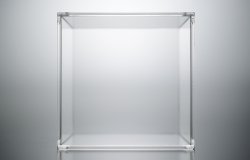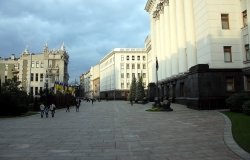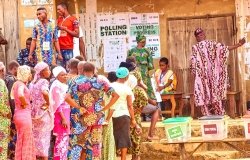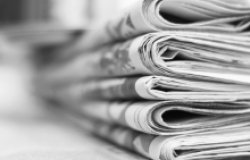Trudeau Shuffles Cabinet, Implications for the United States

Shutterstock.com/Golden Brown
Canadian Prime Minister Justin Trudeau announced changes to his cabinet on Wednesday, July 26. While the primary impact of these changes will be in Canada, there are implications for the United States and bilateral relations as well.
In the parliamentary system, cabinet ministers are chosen from the elected Members of Parliament (or on rare occasions, the appointed Senate) of the political party with a majority or a plurality of the seats in the House of Commons. Prime ministers consider several factors in filing a cabinet including provincial, ethnic, and gender balance. The prime minister can shuffle the cabinet at any time.
Changes to the Trudeau cabinet this time anticipate a future election that must be held on or before October 20, 2025 (in 2007, Canada adopted a fixed election date four years into a five-year government mandate). It is likely that Trudeau asked all MPs in his Liberal Party caucus to decide whether they would be candidates in the next election. Seven members of the cabinet indicated they would not run again, and, in this shuffle, Trudeau replaced them with MPs intending to run again.
From the perspective of the United States, the most important cabinet portfolios are not changing hands: the finance minister remains Chrystia Freeland, who also retains the title of Deputy Prime Minister; the foreign minister remains Mélanie Joly, and the Environment and Climate Change minister continues to be Steven Guilbeault. Two veteran ministers saw slight changes to their responsibilities with François - Philippe Champagne becoming Minister for Innovation Science and Industry with economic development shifted to Mary Ng who becomes Minister for Export Promotion, International Trade and Economic Development.
The two changes that affect US priorities most are the appointment of a new defense minister and a name change for the natural resource ministry.
Bill Blair, a former chief of police for Toronto, Canada’s largest city, is the new Minister of National Defence, having previously served as minister of Public Safety (the counterpart to the US Department of Homeland Security) and minister of Emergency Preparedness. Blair inherits the portfolio from Anita Anand who is becoming president of the Treasury Board, a fiscal management board for the government that is akin to the Office of Management and Budget in the United States. Anand was a remarkably successful leader at National Defence, tackling sexual harassment among senior military officers, advancing NORAD modernization to address domain awareness problems in the Arctic, recommitting to the purchase of F-35 fighter jets, and pushing several projects through a defense procurement process that has confounded many of her predecessors. Her tenure as defense minister coincided with the beginning of Russia’s invasion of Ukraine in March 2022 and the Chinese spy balloon incident in February 2023, two crises that brought national defense to the front of Canadians’ minds.
Jonathan Wilkinson remains the minister responsible for natural resources but gains responsibility for energy, with his department now renamed Energy and Natural Resources. Canada’s constitution grants the Canadian provinces responsibility for energy, and the federal department Natural Resources Canada was concerned with resources from forestry to mining and energy resources offshore such as oil and gas making it the de facto federal energy ministry. Making energy an explicit part of the department's name could signal Trudeau’s desire to develop a national strategy for energy transition in support of meeting climate goals coordinating the efforts of the provinces that have frequently been acrimonious: Alberta arguing with British Columbia over pipelines to bring oil and gas to the coast for shipment to Asia; Quebec refusing to renegotiate terms of a deal on favorable terms for Hydro Quebec, the provincial utility, to move electricity from Newfoundland and Labrador to US markets.
Trudeau’s shuffle will also put the governing Liberals in a better position ahead of the next federal election. Currently, the Liberals hold 158 of 338 seats in the House of Commons, short of the 170 needed for a governing majority. With more seats than any other party, Trudeau was able to form a minority government, and subsequently negotiated an arrangement with the New Democratic Party to support the Liberals through 2025. Jagmeet Singh, the NDP leader, is the most popular of the federal party leaders including Trudeau. And the opposition Conservatives have led in the polls since they elected a new party leader who now serves as Leader of the Official Opposition, Pierre Poilievre.
A federal election in October 2025 remains the most probable scenario, after the dust has settled on the US election in 2024 and Canadians know the direction of their largest trade and investment partner and principal ally. However, the changes to the Canadian cabinet could refresh the government’s image and its popular support, giving Trudeau the option to call a snap election in 2024. US observers will find Ottawa a bit more interesting over the next 27 months.
About the Author

Christopher Sands
Christopher Sands is Director of the Wilson Center’s Canada Institute, the largest policy research program on Canada outside Canada and the leading source of scholarship on US-Canadian relations in Washington, DC. Dr. Sands previously directed applied policy research programs at the Center for Strategic and International Studies and the Hudson Institute and has published extensively over a career of more than 30 years in Washington think tanks.
Read More
Canada Institute
The mission of the Wilson Center's Canada Institute is to raise the level of knowledge of Canada in the United States, particularly within the Washington, DC policy community. Research projects, initiatives, podcasts, and publications cover contemporary Canada, US-Canadian relations, North American political economy, and Canada's global role as it intersects with US national interests. Read more











